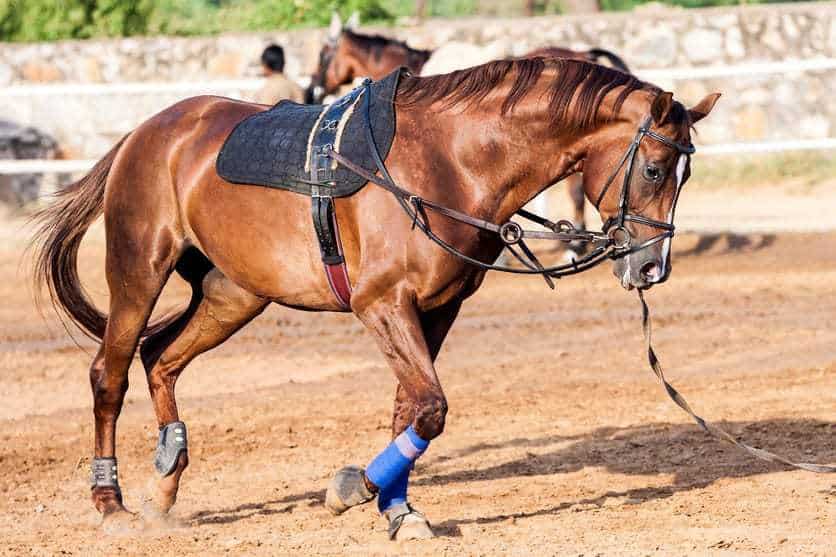What can you do when your horse hates lungeing?

An H&C viewer wrote to us for advice about her mare’s behavior on the lunge.
“Dear H&C, I share a 14hh seven-year-old mare. She’s naturally quite feisty and playful but for a while now she’s been acting quite aggressive towards me on the lunge. She’ll be fine one minute but the next she’ll be rearing, bucking and spinning. Some days she is perfect and doesn’t put a foot wrong. She isn’t on any hard feed and gets exercised regularly. She is a very loving mare but it’s got to the point where I don’t want to lunge her anymore. Any advice on how I should deal with the situation?”
We put the question to Australian Horsemanship’s Jason Webb.
“I’m sorry that you are having this trouble with your mare. As a first step, you need to understand what is causing her behavior and whether you as a handler may be creating or allowing the problem to develop.
Stepping back
Do you step backwards even a little bit when you are lunging? If you do, you are yielding to your horse. This tells them that they are, or could be, in control over how you behave. For a successful relationship your horse needs to see you as the decision maker and this will only happen if your horse accepts that they have to move around you and following your lead is the easiest thing to do. I don’t blame you if you step back out of the way when she starts to rear or buck on the lunge, but by doing this you are confirming that this is a great way to get out of work and that she is in control!
Do you nag?
If you keep on at your horse, she will become irritable and start to sour or become challenging.
Does your horse may have a challenging disposition? This is something that people don’t like to face up to! Many don’t realise their horse has this tendency because their horse has always done things but on their terms. It is not until you need your horse to work or do something they don’t want to that this behavior becomes apparent.
Problem solving
The most important thing you can do is to learn how to move your horse out of your space. Start by making sure that if you ask her to move the hind end away from you she does. This is the danger end and if she won’t move out of your way then you are running the risk of being kicked. In addition to this, she will not be able to rear if you are able to keep moving the hind legs.
Hold your horse on a long rope or lunge, and give the cue to move the hind end away by shifting your body towards the hindquarters. If there is no reaction you need to back it up with more pressure in the way of a bump or tap with the end of the rope/lunge on the hindquarters. Keep this up until she moves her hind end away from you. The moment your horse moves her hind end away, then release all pressure and give her a rub on her face so she knows she has done the right thing.
Once your horse understands this and she moves away from you with just a step towards her hind end, you can start to increase the number of steps you ask for. Now she knows this movement, you can use it to diffuse the most challenging behaviors when they arise. For instance when you ask your horse to lunge and she starts to rear or buck at you, your primary focus should be getting the hind end to move away from you. By doing this, you will show your horse it is not so easy to behave like that.
As soon as your horse gets all four feet back on the ground and starts to calm down get her out on the lunge again for a circle or two. It won’t take long for her to realise it is easier on the lunge as opposed to doing those small turns around the forehand.
As always, your safety is paramount. Always wear a riding hat and gloves and seek professional help if you feel it is getting beyond your limits.”
Good luck!
Jason
Jason Webb specializes in starting young horses and finding solutions to behavioural problems. For more details, see visit www.australianhorsetraining.co.uk






